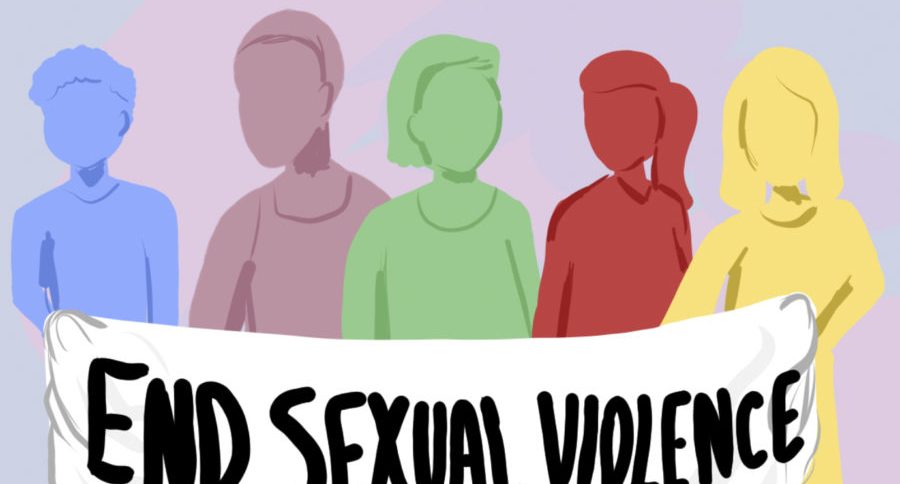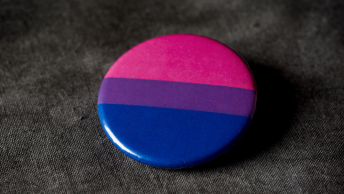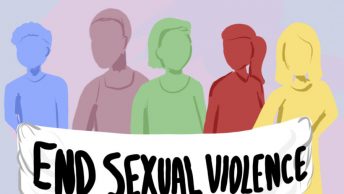Why are LGBTQ+ people more likely to be sexually assaulted, harassed, and abused then cisgender and heterosexual people (Florez)? During this blogpost series, the ways in which LGBTQ+ people are vulnerable to sexual abuse and the impact it has on their general wellbeing will be uncovered.
This is the last post in a series of blogs focused on the impacts and vulnerabilities of experiencing sexual abuse for the fourth letter and some of the plus in the LGBTQ+ acronym. There will be an emphasis on the experiences of those who identify as transgender*, non-binary, and those who are gender-non-conforming. These identities will be analyzed in conjunction with the rest of the LGBTQ+ community in order to see the similarities and differences between these groups struggles. Those who have been abused will be addressed as survivors rather than victims so as to give autonomy to the survivor who has been wronged (Papendick).
Read also Lindsay Sayer’s first and second blog post.
*Transgender is a spectrum of people whose gender identity is different than their sex assigned at birth. Those who identify as non-binary do not ascribe to the gender binary and are neither male nor female. This post also includes anyone who is gender-non-conforming; meaning they do not conform to societies expectations of what a certain gender identity or expression is supposed to look like. To contrast, a person who identifies as cisgender is comfortable with their sex assigned at birth. It is important to note that these labels are constantly evolving and changing.
Anyone of any gender, sex, sexuality, race, ethnicity, class, or ability can be a survivor of sexual abuse. Those who are LGBTQ+, disabled, and BIPOC (Black, Indigenous, People of Color) communities, are more vulnerable to being sexually harassed, assaulted, and raped than their counterparts (National Sexual Violence Resource Center).
The unique struggles of trans+ survivors of sexual abuse will be emphasized in this article as well as some of their intersecting identities. Incorporated into this discussion will be the immediate effects, lasting effects, and life outcomes of survivors. Overall, there will be an investigation of the impacts of sexual abuse on people who identify as transgender, non-binary, and those who are gender-non-conforming.
Lindsay Sayer is a Bachelor student of Humanities and Sciences at Ithaca College
Cover photo: picture by Lauren Pettit, The Daily Evergreen.
The Trans, Non-binary, and Gender-Non-Conforming Survivors
Trans people are statistically the most likely to experience rape and all forms of violence than any other identity within the LGBTQ+ community (Schulze). Specifically, trans women of color are the greatest targets for these forms of abuse (Ussher). The compounding perception of deviance pertaining to trans people of color devalues their experience as survivors of abuse from the dominant culture.
Similar to bi+ survivors, trans+ people experience heightened perceptions of promiscuity which assumes that they were asking to be abused. Additionally, bi+ and trans+ survivors are misunderstood by lesbian, gay, straight, and cisgender people as they have different life experiences than dominant queer culture that is exclusive for white lesbian and gay people. In terms of IPV (Intimate Partner Violence), it is not uncommon for cisgender people to abuse their trans partners.
Trans+ people are also misunderstood when it comes to traumatic experiences due to a distrust and stigma from the medical community. Overall, trans+ people are more vulnerable than their counterparts to sexual abuse because of transphobia. Transphobia perpetuates the idea that society sees trans people as less of people because they identify as trans (Peitzmeier).
Outcomes of Sexual Abuse
Each survivor has different emotional, psychological, physical, and social outcomes following sexual abuse. The experience of non-cisgender survivors has more to do with their gender than marginal sexualities because an assault of their body is also an assault of their gender identity (Cense).
Gender-based violence leaves trans+ survivors with a higher likelihood of developing severe PTSD (Post Traumatic Stress Disorder) symptoms than cisgender survivors. Some of which are body image and self-esteem issues combined with eating disorders, addictions, and sexual problems in relationships. Isolation from a support system who can help a person through these issues are detrimental to a trans+ persons mental health following sexual abuse.
A pertinent issue in the trans+ community are the high rates of suicide attempts and death by suicide (Zeluf). Physical, sexual, and verbal violence against trans+ people is the largest predictor of attempts and death by suicide in the LGBTQ+ community. Adequate support and violence prevention measures would lessen these rates and the improve the mental health of trans+ people all over the globe.
Conclusion
Throughout this blog post, there have been discussions about the vulnerabilities, impacts, and outcomes of sexual abuse against the transgender, non-binary, and those who are gender-non-conforming communities.
Research has shown that assumptions about trans+ people, exclusion from the LGB+ community, medical stigma, and transphobia are some of the largest vulnerabilities to becoming a survivor of sexual abuse. Gender-based violence plays a role in this kind of abuse because it affects one’s concept of gender and their own body.
The impacts of sexual abuse for trans+ people are a greater likelihood of severe mental health issues; especially PTSD. Access to resources as well as a strong support system can make all the difference for trans+ survivors following sexual abuse.
Resources for Survivors
If you or someone you know are a survivor of sexual assault, harassment, or abuse, do not hesitate to reach out to one of these resources below.
References
Cense, Marianne, et al. “Sexual Victimization of Transgender People in the Netherlands: Prevalence, Risk Factors and Health Consequences.” Journal of Gender-Based Violence, vol. 1, no. 2, 2017, pp. 235–252.
Flores, Andrew R., et al. “Victimization Rates and Traits of Sexual and Gender Minorities in the United States: Results from the National Crime Victimization Survey, 2017.” Science Advances, vol. 6, no. 40, 2 Oct. 2020.
Papendick, Michael, and Gerd Bohner. “‘Passive Victim – Strong Survivor’? Perceived Meaning of Labels Applied to Women Who Were Raped.” PLOS ONE, vol. 12, no. 5, 2017.
Peitzmeier, Sarah M., et al. “The Transgender-Specific Intimate Partner Violence Scale for Research and Practice: Validation in a Sample of Transgender Women.” Social Science & Medicine, vol. 291, 2021, p. 114-495.
Schulze, Corina, et al. Gender Identity, Sexual Orientation, and Sexual Assault Challenging the Myths. Lynne Rienner Publishers, 2019.
“Statistics In-Depth.” National Sexual Violence Resource Center, Center for Disease Control and Prevention.
Ussher, Jane M., et al. “Crossing Boundaries and Fetishization: Experiences of Sexual Violence for Trans Women of Color.” Journal of Interpersonal Violence, vol. 37, no. 5-6, 2020.
Zeluf, Galit, et al. “Targeted Victimization and Suicidality among Trans People: A Web-Based Survey.” LGBT Health, vol. 5, no. 3, 2018, pp. 180–190.










